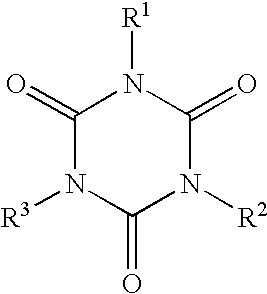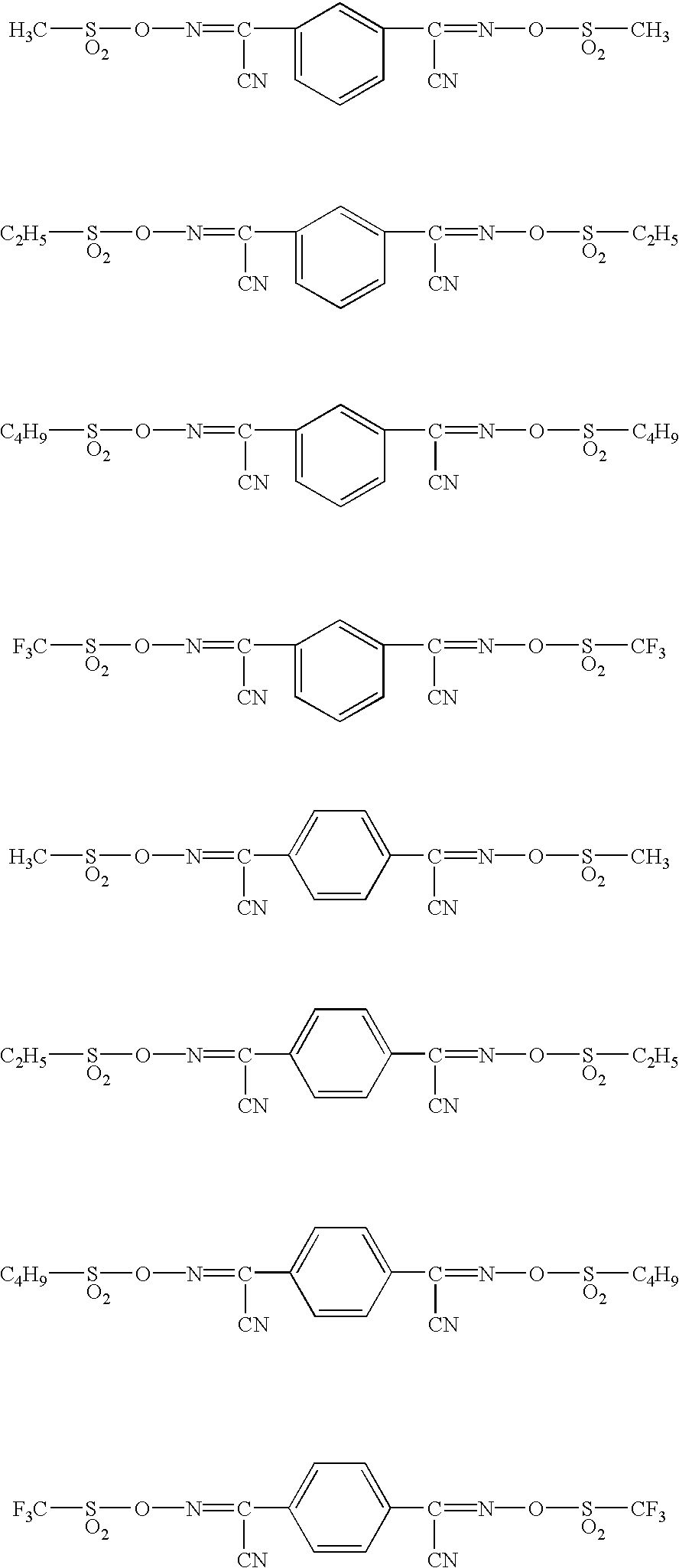Negative photoresist compositions for the formation of thick films, photoresist films and methods of forming bumps using the same
a technology of photoresist composition and thick film, applied in the direction of photosensitive materials, instruments, photomechanical equipment, etc., can solve the problems of deterioration of compatibility or stability in preservation, required plating resistance, etc., and achieve satisfactory plating resistance and high sensitivity
- Summary
- Abstract
- Description
- Claims
- Application Information
AI Technical Summary
Benefits of technology
Problems solved by technology
Method used
Image
Examples
synthesis example 1
Synthesis of Alkali-soluble Novolak Resin (A)
[0069]Sixty parts of m-cresol was added to forty parts of p-cresol, the resulting mixture was condensed with formaldehyde (as formalin) using an oxalic acid catalyst according to a conventional procedure and thereby yielded a cresol novolak resin. Low molecular weight fractions of the resin were removed by fractionation to yield an alkali-soluble novolak resin having a weight average molecular weight of 15000 (novolak resin A).
synthesis example 2
Synthesis of Alkali-Soluble Acrylic Resin (B)
[0070]The inside of a flask equipped with a stirrer, reflux condenser, thermometer and dropping funnel was replaced by nitrogen gas, and 200 g of propylene glycol methyl ether acetate as a solvent was placed in the flask, followed by stirring. Thereafter, the temperature of the solvent was raised to 80° C. Into the dropping funnel, 0.5 g of 2,2′-azobisisobutyronitrile as a polymerization initiator (available from Wako Pure Chemical Industries, Ltd. under the trade name of V-65), 130 g of 2-methoxyethyl acrylate, 50.0 g of benzyl methacrylate and 20.0 g of acrylic acid were charged, followed by stirring until the polymerization initiator dissolved. The resulting solution was uniformly dropped into the flask over 3 hours and was allowed to react at 80° C. for further five hours. The reaction mixture was then cooled to room temperature and thereby yielded an acrylic resin (alkali-soluble acrylic resin B).
example 1
[0071]In 150 parts of propylene glycol methyl ether acetate were dissolved 75 parts of the novolak resin A, 15 parts of the alkali-soluble acrylic resin B, 10 parts of hexamethoxymethylated melamine (available from Sanwa Chemical Co., Ltd. under the trade name of Nikalac Mw-100) as a crosslinking agent (C) and 0.3 part of an acid generator (D) represented by the following formula, the resulting solution was filtrated using a membrane filter having a pore size of 1.0 μm and thereby yielded a negative photoresist composition. The properties of this composition were determined according to procedures mentioned later. The results are shown in Table 1.
[0072]
PUM
| Property | Measurement | Unit |
|---|---|---|
| thickness | aaaaa | aaaaa |
| height | aaaaa | aaaaa |
| thickness | aaaaa | aaaaa |
Abstract
Description
Claims
Application Information
 Login to View More
Login to View More - R&D
- Intellectual Property
- Life Sciences
- Materials
- Tech Scout
- Unparalleled Data Quality
- Higher Quality Content
- 60% Fewer Hallucinations
Browse by: Latest US Patents, China's latest patents, Technical Efficacy Thesaurus, Application Domain, Technology Topic, Popular Technical Reports.
© 2025 PatSnap. All rights reserved.Legal|Privacy policy|Modern Slavery Act Transparency Statement|Sitemap|About US| Contact US: help@patsnap.com



